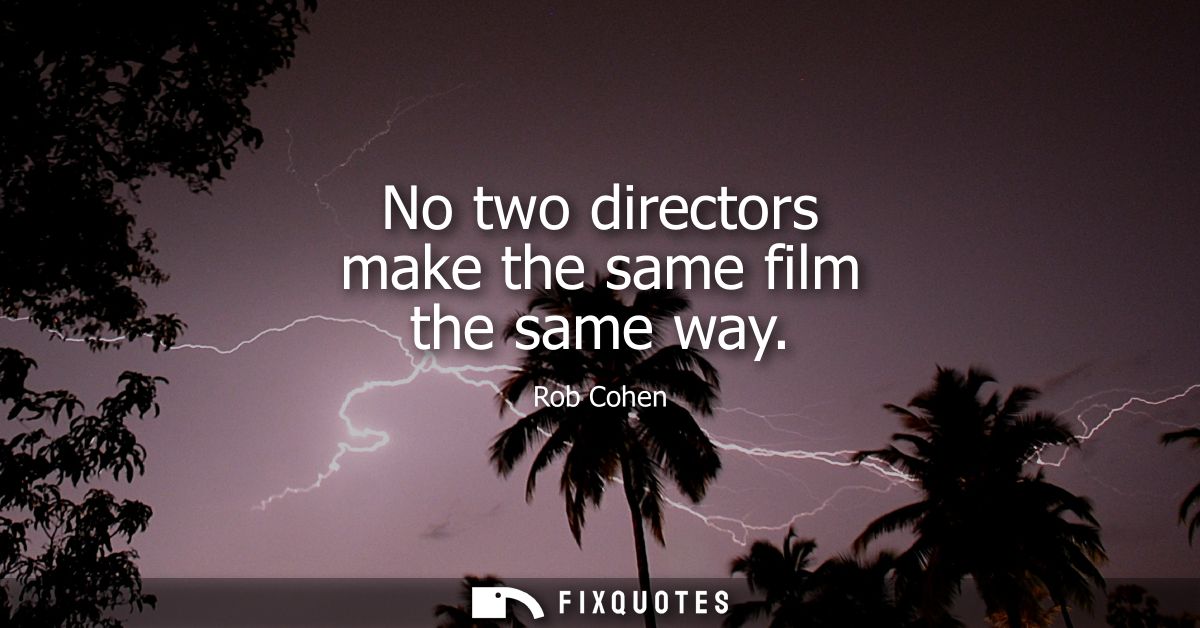"No two directors make the same film the same way"
About this Quote
The observation captures the essence of filmmaking as a uniquely personal craft. Even when directors face identical scripts, budgets, and casts, their sensibilities filter every choice: where to place the camera, how long to hold a shot, what rhythm to seek in a scene’s breath. One might favor restless handheld movement to transmit anxiety; another might sculpt tension through stillness and geometry. Pacing, color palette, sound design, and the micro-moments coaxed from actors become signatures as distinct as handwriting.
Process diverges as much as product. Some directors storyboard every frame, others discover the film on set through improvisation. Some rehearse extensively, building a shared language before the camera rolls; others preserve first takes to catch fragile spontaneity. Leadership styles set the emotional temperature of a shoot, shaping how crews solve problems and how performers take risks. Even accidents, weather, technical glitches, an offhand remark, are interpreted differently depending on temperament: obstacles for one become opportunities for another.
The remark also gestures toward film as collaboration guided by perspective. A director’s taste curates who is invited to the conversation: the cinematographer with a penchant for natural light, the editor who cuts on feeling rather than plot, the composer who leaves space for silence. Those choices create ecosystems that generate different films from the same blueprint, much as two architects can design divergent structures on the same foundation.
Underlying it all is the irreducible human viewpoint. Biography, cultural context, and ethical priorities inflect what a story emphasizes or omits. The same scene can be tender or chilling depending on whose eyes are behind the lens. That variability is cinema’s resilience and its moral argument: stories matter precisely because storytellers differ, and the vitality of the medium depends on making room for many ways of seeing. Originality, then, is less a flourish than the inevitable trace of a life meeting a story.
About the Author
